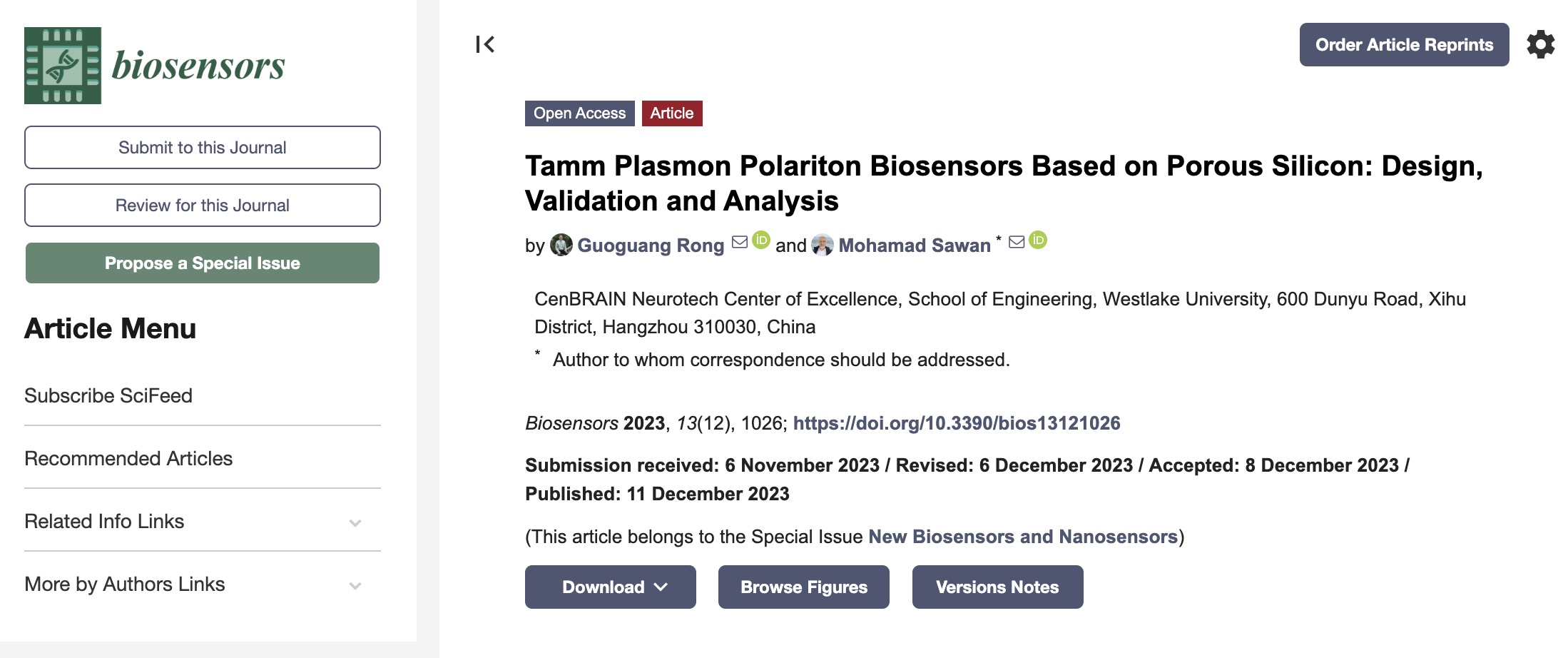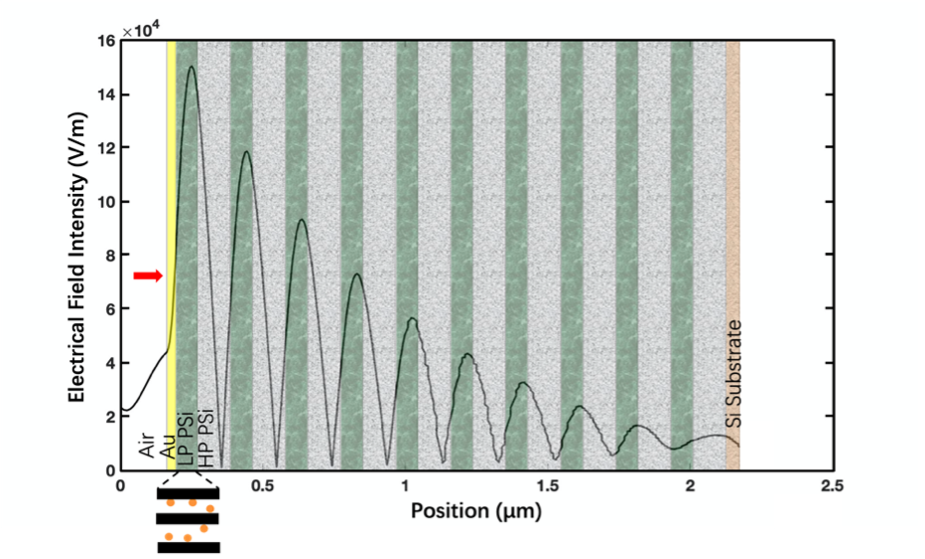Titled “Tamm Plasmon Polariton Biosensors Based on Porous Silicon: Design, Validation and Analysis”, this contribution has been published in the Biosensors.
Congratulations to our Research Professor Guoguang Rong for this excellent achievement.

Reference:
Rong, G.; Sawan, M. Tamm Plasmon Polariton Biosensors Based on Porous Silicon: Design, Validation and Analysis. Biosensors 2023, 13, 1026. https://doi.org/10.3390/bios13121026
Abstract:
Tamm Plasmon Polariton (TPP) is a nanophotonic phenomenon that has attracted much attention due to its spatial strong field confinement, ease of mode excitation, and polarization independence. TPP has applications in sensing, storage, lasing, perfect absorber, solar cell, nonlinear optics, and many others. In this work, we demonstrate a biosensing platform based on TPP resonant mode. Both theoretical analyses based on the transfer matrix method and experimental validation through nonspecific detection of liquids of different refractive indices and specific detection of SARS-CoV-2 nucleocapsid protein (N-protein) are presented. Results show that the TPP biosensor has high sensitivity and good specificity. For N-protein detection, the sensitivity can be up to 1.5 nm/(µg/mL), and the limit of detection can reach down to 7 ng/mL with a spectrometer of 0.01 nm resolution in wavelength shift. Both nonspecific detection of R.I. liquids and specific detection of N-protein have been simulated and compared with experimental results to demonstrate consistency. This work paves the way for design, optimization, fabrication, characterization, and performance analysis of TPP based biosensors.

Fig.1. Structural diagram and measurement setup of the TPP biosensor. The biosensor is a ten-period porous silicon DBR coated with Au thin film on top. The measurement system is reflection spectroscopy where a Y-shape fiber is used to provide incident white light and collect reflected light.
图1. TPP生物传感器的结构图和测量装置。该生物传感器是一种十周期多孔硅DBR,顶部涂有Au薄膜。测量系统是反射光谱法,其中Y形光纤用于提供入射白光并收集反射光。

Fig. 2. COMSOL simulated distribution of electrical field intensity of TPP biosensor based on ten-period porous silicon DBR. The polarization is transverse electric (TE), with red arrow at the left side indicating light of 1 W/m incident vertically from air. The highest peak of electrical field intensity resides in the first LP PSi layer. Au nanoparticles infiltrate into the first LP PSi layer to form a nanocomposite layer, which is displayed in the cartoon on the lower left of the figure.
图2. COMSOL模拟了基于十周期多孔硅DBR的TPP生物传感器的电场强度分布。极化为横向电场波(TE),左侧红色箭头指示从空气垂直入射的1W/m的光。电场强度的最高峰值位于第一个低孔隙率多孔硅(Low Porosity Porous Silicon, LP PSi)层中。Au纳米颗粒渗透到第一个LP PSi层中,形成纳米复合材料层,如图左下角的放大图所示。
More information can be found at the following link: https://www.mdpi.com/2079-6374/13/12/1026